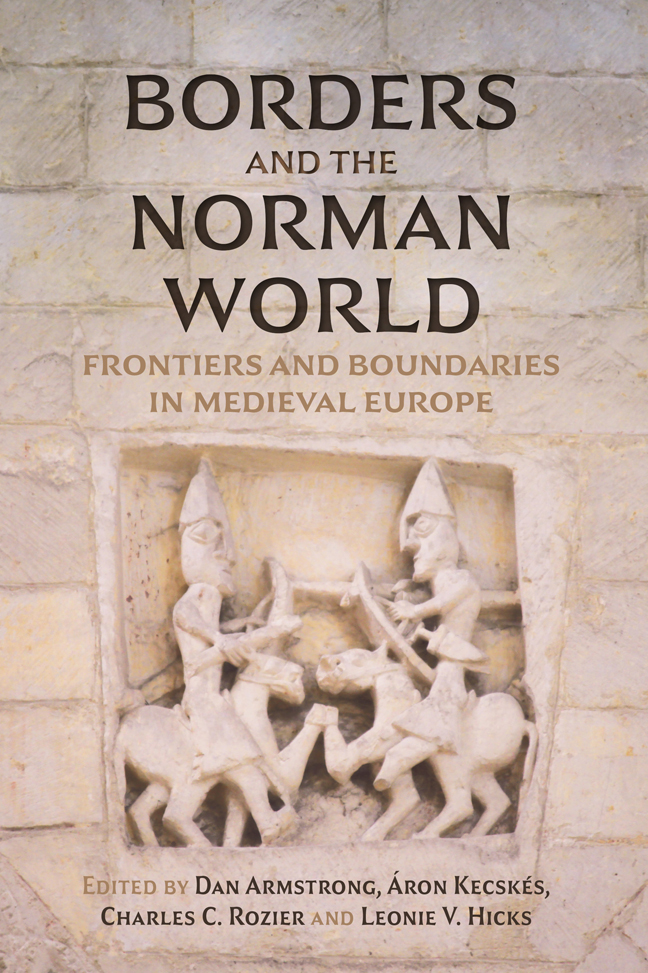Book contents
- Frontmatter
- Contents
- List of Illustrations
- List of Contributors
- Acknowledgements
- List of Abbreviations
- Naming Conventions
- Maps
- Introduction: Writing the Borders of the Norman World
- Part I Borders in and Around the Norman World
- Part II Ecclesiastical Borders
- Part III Conceptual Boundaries
- Afterword: Borders, Landscapes, and Seascapes
- Select Bibliography
- Index
13 - The Lion, the Camel, and the Cassa of Terracina: Transfer and Exchange on the Borders of Norman Italy
Published online by Cambridge University Press: 22 February 2024
- Frontmatter
- Contents
- List of Illustrations
- List of Contributors
- Acknowledgements
- List of Abbreviations
- Naming Conventions
- Maps
- Introduction: Writing the Borders of the Norman World
- Part I Borders in and Around the Norman World
- Part II Ecclesiastical Borders
- Part III Conceptual Boundaries
- Afterword: Borders, Landscapes, and Seascapes
- Select Bibliography
- Index
Summary
Introduction: The Cassa of Terracina
Up Until The Formation of the Italian national state, the comune of Terracina lay in a key frontier zone of southern Italy. Around thirty-five miles south of Rome following the course of the Via Appia, Terracina occupies the point where the Lepini mountains touch the Mediterranean, and straddles a naturally defensive position along the north-south coastal pass, guarding the approaches to the alluvial plains of the Pontine Marshes. This geographical position became increasingly important from the eleventh century. At a time in which the Norman conquests had fundamentally altered the balance of power in southern Italy, the city was used by a succession of popes to exert their authority within and across the borders of the patrimonium Petri. It is with an eye to Terracina's unique position in this border region that this chapter will examine an overlooked object which has the potential to shed new light on processes of communication, transfer, and exchange on and across the frontiers of Norman southern Italy and Sicily. In so doing, it shall not only attempt to refine understanding of the multifaceted impetuses that shaped the emerging kingdom, but it will also challenge scholars to forge new frontiers by expanding the borders of current debate.
Of central importance for this analysis is Pope Alexander II's (sed. 1061–73) grant of the city of Terracina to Abbot Desiderius of Montecassino (sed. as abbot of Montecassino 1058–87, thereafter, as Pope Victor III 1086–87) in around 1061. This catalysed a number of building projects such as the recon-struction and reconsecration of its duomo, also known as the Concattedrale di San Cesareo or dei Santi Cesareo e Pietro. This process, which continued into the twelfth and thirteenth centuries, has left an impressive legacy in the duo-mo's campanile, the cosmatesque pavement in its central nave, and its main portico. Between the seventeenth and nineteenth centuries, the building was remodelled – a process which brought to light older material and structural elements. During such works in the 1880s, workers chanced upon a wooden chest which was fastened to the sacristy wall by iron clamps and used as a store for firewood.
- Type
- Chapter
- Information
- Borders and the Norman WorldFrontiers and Boundaries in Medieval Europe, pp. 331 - 358Publisher: Boydell & BrewerPrint publication year: 2023



